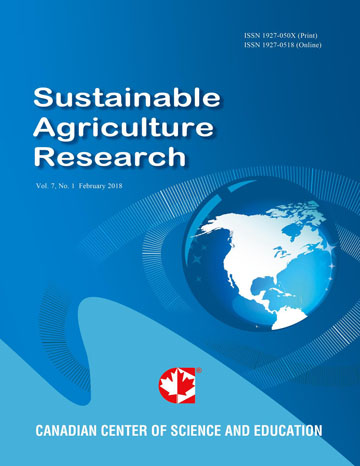Seed Germination and Seedling Growth Responses to Different Sources and Application Rates of Hydrothermal Carbonization Processed Liquid
- Yuhang He
- Quan He
- Kris Pruski
- Bishnu Acharya
- Lord Abbey
Abstract
Hydrothermal carbonization processed liquid (HTCPL) is a by-product of hydrothermal carbonization of biomass, which is used sparingly as natural fertilizer. A study was performed in the Faculty of Agriculture, Dalhousie University (Canada) between June 2019 and April 2020 to evaluate the elemental composition of HTCPL derived from three different biomass feedstock; namely, seafood compost; buckwheat (Fagopyrum esculentum), and willow (Salix babylonica). Different HTCPL application rates (0-10%) were tested on seed germination and seedling growth of pea (Pisum sativum), sunflower (Helianthus annuus), pac choi (Brassica rapa subsp. chinensis), kale (Brassica oleracea var. sabellica) and lettuce (Lactuca sativa). Elemental composition was higher in the HTCPLs compared to their respective feedstocks except for nitrogen. The 5% and 10% willow HTCPL with a pH between 3.8-4.0 inhibited seed germination and seedling growth compared to the other treatments with a pH range between 4.6-5.8. Kale, lettuce and sunflower radicle and hypocotyl growth were promoted following treatments of their respective seeds with seafood compost HTCPL while pea radicle and hypocotyl lengths were best promoted by 5% buckwheat and 10% seafood compost HTCPLs. Comparatively, 0.5% willow HTCPL increased surface area of seedling radicles while 1% willow and 0.5% buckwheat HTCPLs increased surface area of hypocotyls, irrespective of plant species. The distinction among the treatments was demonstrated on a 2-dimensional principal component analysis biplot that explained 89% of the variations in dataset. Overall, buckwheat HTCPL proved to be more effective at increasing seed germination and seedling growth compared to the other HTCPLs. The inhibitory effect of willow HTCPL at high application rate (5-10%) were obvious for all plant species. A comprehensive non-targeted chemical profile of HTCPL will help to explain mechanisms.
- Full Text:
 PDF
PDF
- DOI:10.5539/sar.v10n4p1
Index
Contact
- Joan LeeEditorial Assistant
- sar@ccsenet.org
